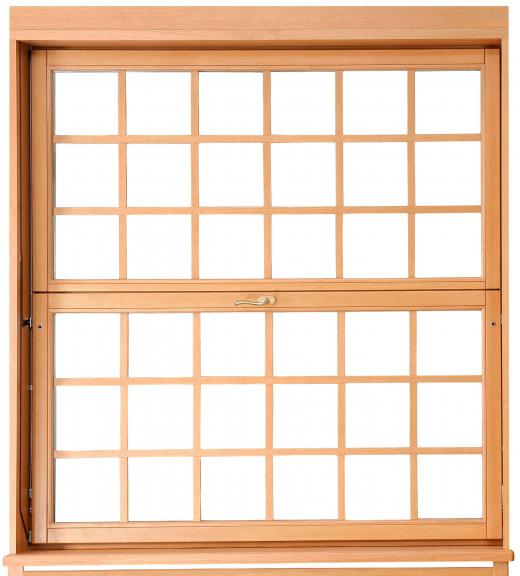Check rails are the parts of windows where the frames of the glass panes meet. Typically, this is in the middle of the window. On a double-hung or single-hung window, it is composed of two parts: the bottom rail of the top pane's frame and the top rail of the bottom pane's frame. On a sliding window, it is where the frames of the vertical panes of glass meet. Usually the window lock is placed on the check rail.
A window is composed of several parts. The sash is the frame that holds the glass in place. The vertical pieces of the frame are called the stiles, and the rails are the horizontal sections.

On double-hung windows, the check rail is on the rails that meet in the middle and is known as the meeting rail. On a sliding window, builders sometimes refer to it as the meeting stile because it consists of the vertical frame pieces that meet in the middle of the window. Other builders often use the term lock rail for both types of windows. People frequently refer to the individual parts as the upper sash check rail and as the lower sash check rail.
Typically, the locks on check rails pull the two rails together snugly. This is important for weather tightness and security. Often when there is a gap, it can cause an energy leak. This usually lets heated air escape during the cold season and cooled air out in the hotter season. A gap may also provide a place for bugs to enter the building.
In a single-hung window, only the top or bottom sash is movable. Where the two sashes meet, it is still called a check rail. In some windows that do not open, the manufacturer will create the look of check rails for purely aesthetic purposes, but sometimes people do not want this grille added because it can impair a view.
For people who do not like to see the lock mechanism, a concealed lock may be the answer. This specialty lock is mounted inside cavities in the check rails. Most of these locks have a visible handle, but this is not as intrusive as seeing the full locking mechanism. Typically, this type of lock requires a professional installation because the corresponding parts must match perfectly to ensure a tight lock. Another consideration when purchasing this type of lock is the check rail clearance, which is the space between the two windowpanes as the frames slide past each other.
Many companies manufacture special weather stripping called check rail weather strip. It seals the gap that may occur between the two sashes. Some window manufacturers mill a kerf, or groove or notch, into the rails and sell weather stripping for this. Generally, the newer style of this weather stripping is a bulb-style. This replaces the older, less efficient felt-style.
